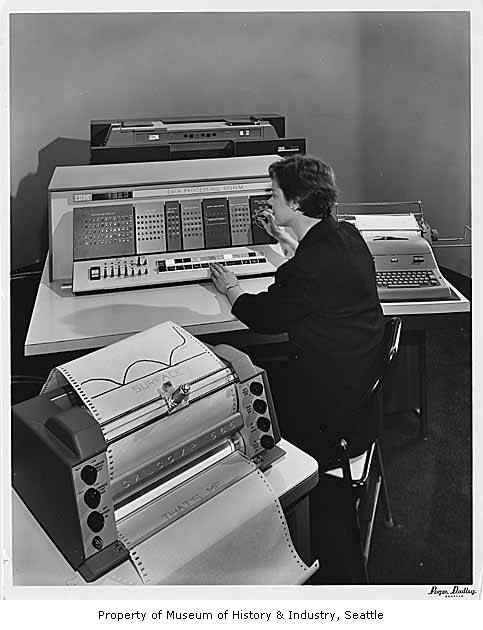IBM 1627 on:
[Wikipedia]
[Google]
[Amazon]



 The IBM 1627 was a
The IBM 1627 was a
IBM 1627 documentation
Photo of 1627 attached to an IBM 1620
at the



 The IBM 1627 was a
The IBM 1627 was a rebranded
Rebranding is a marketing strategy in which a new name, term, symbol, design, concept or combination thereof is created for an established brand with the intention of developing a new, differentiated identity in the minds of consumers, investors ...
Calcomp plotter
Calcomp plotters (sometimes referred to as CalComp plotters) were the best known products of the California Computer Products company ( Calcomp or CalComp).
Overview
The Calcomp 565 drum plotter, introduced in 1959, was one of the first compute ...
sold by IBM for use with the IBM 1620
The IBM 1620 was announced by IBM on October 21, 1959, and marketed as an inexpensive scientific computer. After a total production of about two thousand machines, it was withdrawn on November 19, 1970. Modified versions of the 1620 were used as ...
, and, later, the IBM 1130
The IBM 1130 Computing System, introduced in 1965, was IBM's least expensive computer at that time. A binary 16-bit machine, it was marketed to price-sensitive, computing-intensive technical markets, like education and engineering, succeeding th ...
computers. It became perhaps the first non-IBM peripheral that IBM allowed to be attached to one of its computers.
The plotter fed a roll of paper with perforated edges over a drum with matching sprockets at the sides. The drum could move the paper forward and backward (the X-axis). A pen holder slid horizontally over the paper (the Y-axis). Both the drum and the pen holder were controlled by stepper motor
A stepper motor, also known as step motor or stepping motor, is a brushless DC electric motor that divides a full rotation into a number of equal steps. The motor's position can be commanded to move and hold at one of these steps without any pos ...
s. Commands included lowering the pen down to write and raising it up, and moving the drum or the pen holder one step of in either direction. There were also commands to move the drum and pen together one step in the four diagonal directions.
The standard size 1627 Model 1 was a Calcomp model 565 plotter and used 12-inch-wide paper (305 mm) with a plotting area of . Model 1 could operate at 18,000 steps per minute. Model 2 was a Calcomp 563 and used 31-inch-wide paper (787 mm) with a plotting area of . Model 2 could operate at 12,000 steps per minute.
The paper rolls were long. A metal bar above the take-up reel allowed a finished plot to be torn off and removed. The drum would then be advanced using the manual controls and the fresh paper end taped to the take-up reel. The standard pen was a ball-point, but liquid ink pens were available, and typically used for higher quality plots intended for publication. Other paper stock could be taped to the drum if desired. A chart drive switch was provided to turn off the motorized paper supply and take-up reels for this purpose.
References
IBM 1627 documentation
External links
Photo of 1627 attached to an IBM 1620
at the
Seattle World's Fair
The Century 21 Exposition (also known as the Seattle World's Fair) was a world's fair held April 21, 1962, to October 21, 1962, in Seattle, Washington, United States.Photo of Calcomp 565 plotter at Stuttgart Computer MuseumA working Calcomp 565 on Youtube.com
{{Compu-hardware-stub
{{Compu-hardware-stub
1627
Events
January–March
* January 26 – The Dutch ship t Gulden Zeepaert'', skippered by François Thijssen, makes the first recorded sighting of the coast of South Australia.
* February 15 – The administrative rural p ...
1627
Events
January–March
* January 26 – The Dutch ship t Gulden Zeepaert'', skippered by François Thijssen, makes the first recorded sighting of the coast of South Australia.
* February 15 – The administrative rural p ...